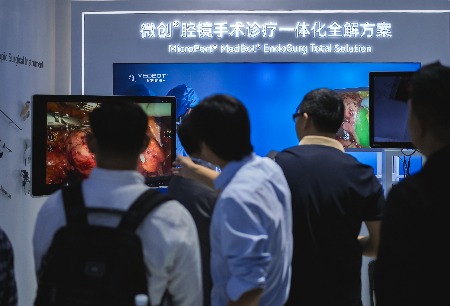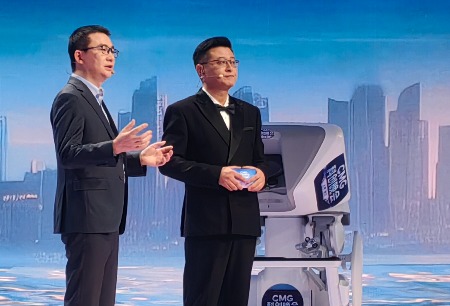The Hepatobiliary Surgery team at Fujian Provincial Hospital, affiliated with Fuzhou University, has successfully completed one of the most challenging procedures in abdominal surgery — a pancreaticoduodenectomy combined with superior mesenteric vein (SMV) resection and prosthetic vascular graft reconstruction — using the domestically developed Toumai® Surgical Robot. According to publicly available data, this marks the first time a China-made surgical robot has been used to assist such a complex procedure.

The entire operation was performed laparoscopically. The tumor was fully removed, lymphadenectomy was radical and thorough, and multiorgan resection as well as vascular and digestive tract anastomoses were completed with high efficiency. Throughout the surgery, the Toumai® system demonstrated its advantages in ultra-high-complex procedures: high-definition 3D visualization, stable and mature performance, and precise, flexible instrument control — delivering truly minimally invasive surgical outcomes.
A High-Risk Case with Severe Vascular Involvement
The patient, a 74-year-old woman, was diagnosed with a pancreatic head tumor on MRI, which revealed pancreatic atrophy, pancreatic duct dilation, and lower common bile duct stenosis with intra- and extrahepatic ductal dilation. More critically, the tumor had invaded approximately half the circumference of the SMV over an estimated 2 cm segment. Intraoperative assessment confirmed the need for en bloc venous resection and reconstruction.
The SMV is a vital abdominal vessel; failure of reconstruction may lead to catastrophic complications such as small bowel congestion and necrosis or liver failure. The complexity of this case imposed exceptionally high requirements for surgical expertise, robotic system performance, perioperative management, and multidisciplinary collaboration.
Precision Planning and Multidisciplinary Collaboration
“The challenge was to achieve complete tumor removal and digestive tract reconstruction while ensuring unobstructed venous flow after reconstruction,” noted Prof. Chen Shi, Vice President of Fujian Provincial Hospital.
The department conducted multiple MDT meetings and preoperative planning sessions to develop a tailored “precision resection + enhanced recovery” strategy.
Successful Reconstruction with Prosthetic Graft
During the operation, Prof. Chen, assisted by Dr. Wei Shaoming and Dr. Lai Jianlin, resected the duodenum, part of the stomach, and the invaded venous segment. Due to excessive tension at the anastomotic site, an artificial vascular graft was used for end-to-end reconstruction. The vascular anastomosis was completed in under 30 minutes, and intraoperative ultrasound confirmed smooth blood flow through the graft. The entire procedure lasted approximately 400 minutes with an estimated blood loss of just 300 mL. All critical steps aligned precisely with the preoperative plan. The patient recovered well postoperatively and has since been discharged.









 Hu ICP Bei No. 20013662 HGWA Bei No. 31011502015178
Hu ICP Bei No. 20013662 HGWA Bei No. 31011502015178 " are registered trademarks of Shanghai MicroPort Medical (Group) Co., Ltd.” . They have been authorized to be used by Shanghai Microport Medbot (Group) Co., Ltd., and no other party shall use such trademarks without prior written permission thereof.
" are registered trademarks of Shanghai MicroPort Medical (Group) Co., Ltd.” . They have been authorized to be used by Shanghai Microport Medbot (Group) Co., Ltd., and no other party shall use such trademarks without prior written permission thereof.
